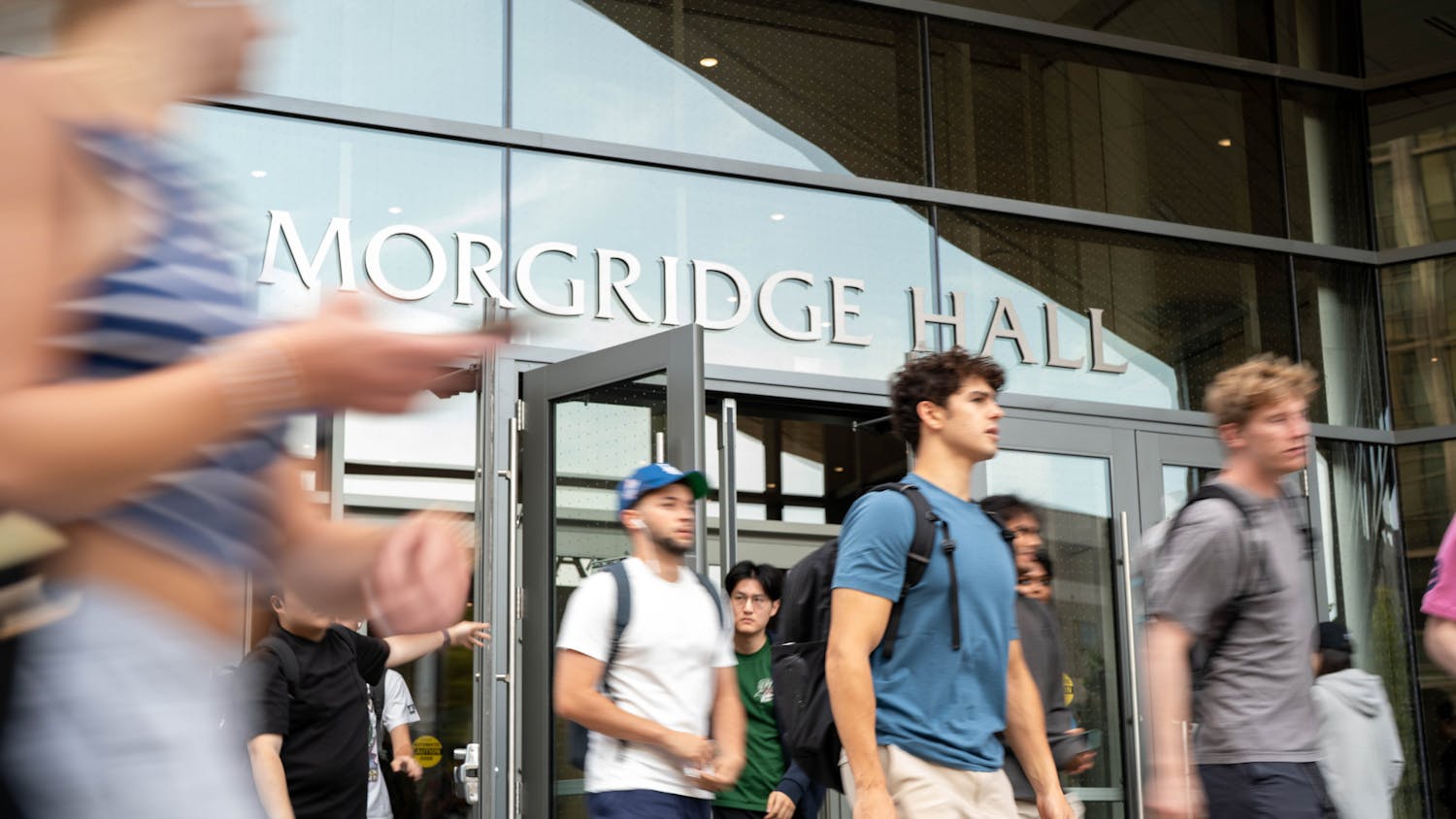The Madison Metropolitan School District (MMSD) is cautiously weighing artificial intelligence for teachers in their K-12 schools, using AI to save teachers’ time by helping generate syllabi, individualized lesson plans and analyze learning data.
While students are discouraged and limited from using AI, for teachers, MMSD Instruction Technology User Manager Eric Benedict said AI implementation is more complicated, because MMSD is not just looking at AI in the classroom.
“We are still in the phase of training and educating our staff on what AI is, what it can do, what our guardrails [are] and what our guidelines for its use district wide are, instructionally or operationally…how it can be used in HR systems, community resource systems and in communications,” Benedict said.
Schools across the country are involving AI more in their classrooms and administration.
Since ChatGPT launched in December 2022, Benedict has weighed how AI can change K-12 education. From adapting teacher curriculum to individual students' needs or utilizing AI to analyze attendance data, Benedict is optimistic AI can help — not replace — teachers.
AI aims to help maximize a teacher’s time, which is how some MMSD teachers are using it in the classroom. They provide data, specific lesson plans and can produce static content. It can also rewrite assignments and instructions to provide additional support for the students teachers are trying to reach.
“I used to teach science, and let's say we're doing a worksheet on velocity with students. And I had a student that really likes trucks, so I could now tailor the whole assignment based on trucks. And without me spending hours to do that in the past, now I can do that in a short period of time,” Benedict said.
Luke Gangler, a bilingual resource and social studies teacher at La Follette High School, said teachers are interested in using AI and have been using the major AI applications like Brisk Learning.
However, the district has been slow to make major changes, taking the time to run monthly asynchronous lessons and professional development opportunities for teachers to educate themselves on practical, productive and ethical uses of AI. Gangler said these training sessions have been effective.
“Staff who attended it were able to engage with AI tools and see how they could help them with our shift to standard space creating, which is a really big shift for us,” Gangler said. “It's a lot of cognitive complexity and time, so to be able to see how AI can maybe make that a little bit more feasible is really valuable. So I think there's a lot of promise there and that the district and schools are trying to leverage that.”
MagicSchool AI, Brisk Teaching and SchoolAI are education specific applications for teachers designed to help them save time.
These tools generate syllabi, newsletters and assessments, while also giving feedback on assignments or assisting in lesson planning. SchoolAI targets classroom insights, assisting teachers in personalized lesson plans and providing teachers with data on their classes.
MMSD is currently vetting and researching the benefits of these applications. Gangler said he’s seen Brisk Teaching used most often due to its planning and time-saving abilities.
Student AI use is currently limited. MMSD’s technology department is working on launching a student-specific AI platform, but they’re moving forward with caution. Benedict said guardrails must be in place, and there needs to be transparency between the district, students and parents first.
“I think in some ways, what's being pushed right now [with students using AI in class] and what's popular right now isn't probably very helpful, or is not transformative,” Gangler said. “But it's essential that we start very thoughtfully integrating AI literacy, which will include students using AI, but for the purpose of learning about AI itself.”
At the high school level, major chatbot sites, including Claude, ChatGPT, Google Gemini and Copilot, are blocked on school-issued Google Chromebooks.
“We want to educate our students first before we give them explicit access to things. We just haven't gotten there yet to educate our students around [certain AI programs],” Benedict said.
MMSD teachers are being taught how they can implement AI tools in their classrooms and how they themselves can then educate their students.
“One of our key things that we always teach our teachers is that humans are on both sides of AI. So the human inputs it, the machine does whatever it does, but then the person on the other side interprets before using,” Benedict said. “That's what we need to work with our students on as well, so that they're understanding all the different pieces that are coming out of it.”
Gangler did an activity in his class where students were instructed to ask AI to produce an image of a nurse and then to analyze the image for bias.
“The point was not AI, it was to look at the biases behind it,” Gangler said.
MMSD is a “Google school district” and educates teachers on how to use Google Gemini. MMSD has a data privacy agreement with Google, meaning district data is not being used to train the language model behind Gemini.
On the Library Media Services website for the MMSD, the district links a library resource for AI Tools for Teaching and Learning. It’s currently only available for staff to “offer innovative ways to enhance teaching and learning.”
Benedict added that a possible future use of AI would be attendance collection. Teachers could ask AI to review records and provide insights on attendance in the classroom. Although AI is not currently being used in that capacity, Benedict believes it has potential long-term.
While AI is being integrated into schools within MSSD, Benedict made it clear that there are certain areas, like grading and student learning accommodations, that AI is not being used.
“Anything that would involve, at this point, with guidance, anything around either special ed or any sort of accommodations, we look at not putting student information directly into any sort of model,” Benedict said.
Education experts have said they are concerned about student data, protected from federal law, inputted into private AI companies.
Other area school districts also are implementing AI policies and programs. MMSD is in open communication with other districts, sharing ideas and following similar guidelines. Data privacy and keeping students safe has been — and continues to be — a conversation MMSD has with other districts.
From a teacher’s perspective, Gangler said he has not seen pushback from students, parents or many other teachers on AI usage. But Gangler said he does not view AI as “necessarily revolutionizing” education and sees AI companies “rushing” to market AI to teachers for educational purposes that he believes are not as “safe and secure” as they suggest they are.
“In testing SchoolAI, I was able to get it to produce slurs, just through manipulating it with prompts. So [it's] pretty concerning that a company [whose] whole point is, ‘we make these safe chat bots,’ hasn't done what's necessary to prevent that kind of thing from happening,” Gangler said.
The future of AI in MMSD is constantly changing. Benedict said two months ago, his view of the future would have been different from today.
“If students do have access to artificial intelligence tools for their learning, it's specifically those that will be aligned with our district values and our district strategic goals — with guardrails, guidelines and safety measures put in place to do our best to keep our students as safe as possible and that the information they're getting is non-biased as possible,” Benedict said.






